200 amp service is the standard electrical service in most houses. But what wire size should you use for such a service? That’s what we will share today.
Generally, a #2 AWG copper wire is ideal for a 200 Amps service if the distance is more than 50 feet. But, if the distance is less, you can also use #4 AWG aluminum or copper-clad aluminum. You can install it inside a 1.5-2 inch diameter, schedule 40 or 80 PVC conduit for underground service.
There are two wire sizes because the size depends on your wire material. This guide will explore the wire sizes and factors determining the sizes, the types of wires, and their usage.
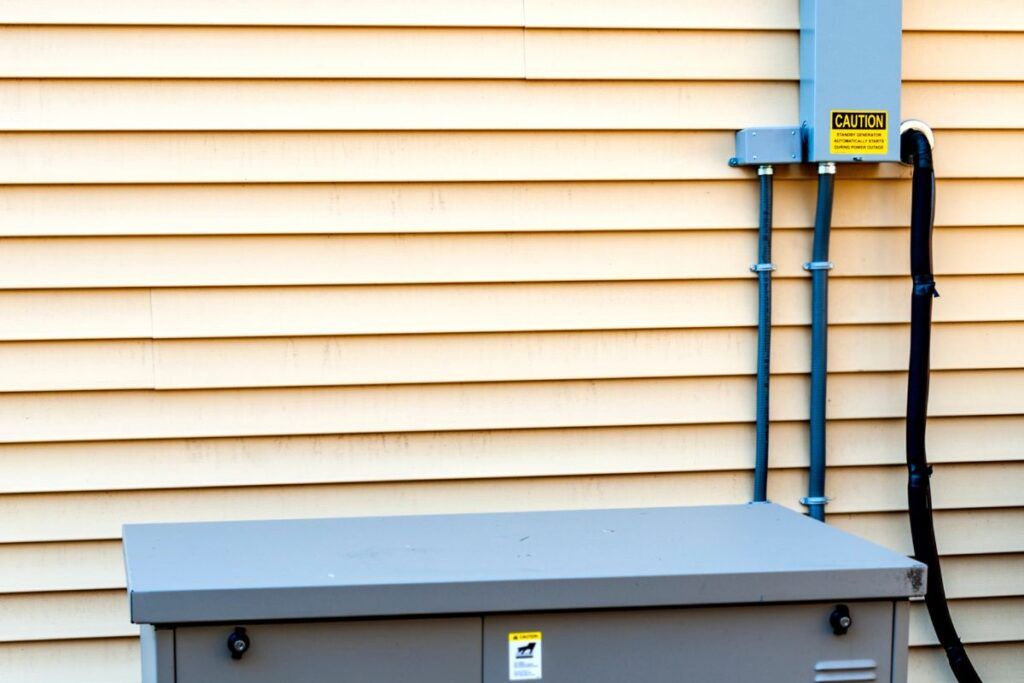
Check out our list of top-handpicked products for all your electrical, appliance, and HVAC system needs to keep your home running smoothly.
This post includes some affiliate links.What size of wire is needed for a 200 amp service?
In the old days, most houses used to have only 40 or 50-Amps services.
That was enough for the whole house.
But nowadays, we use several electrical devices to speed up our lives.
For that, a 200 amp service is the standard electrical service for normal houses today.
People are upgrading their electrical services from 40-50 amps to 200 amps.
If you are building new houses, straightaway, go for the 200 amps.
But, while changing from 50 amps to 200 amps, the wire size will change too.
Depending on the ampacity, a 200 amp wire can handle 250A.
So, 250 kcmil wire is the best wire for 200 amp service.
Depending on the wire type, the best size for a 200 amp service is a 2 AWG copper wire or a 4 AWG aluminum or copper-clad aluminum wire.
The size of the wires should be the same as the live and neutral wires.
The ground wire can be different.
These wire sizes are the best and safest ones to use.
They allow the wires to handle the electrical services at full amperage without high voltages or voltage drops.
Suppose the wire sizes are smaller than the recommended size.
In that case, the voltage will increase, and the wire will start melting, resulting in a fire hazard.
Especially the copper wire should be at least 2 AWG and not less than that.
Since we have shared two sizes of wires depending on two wire types, let’s talk about them and the reasons behind their uses.
Why should we use copper wiring?
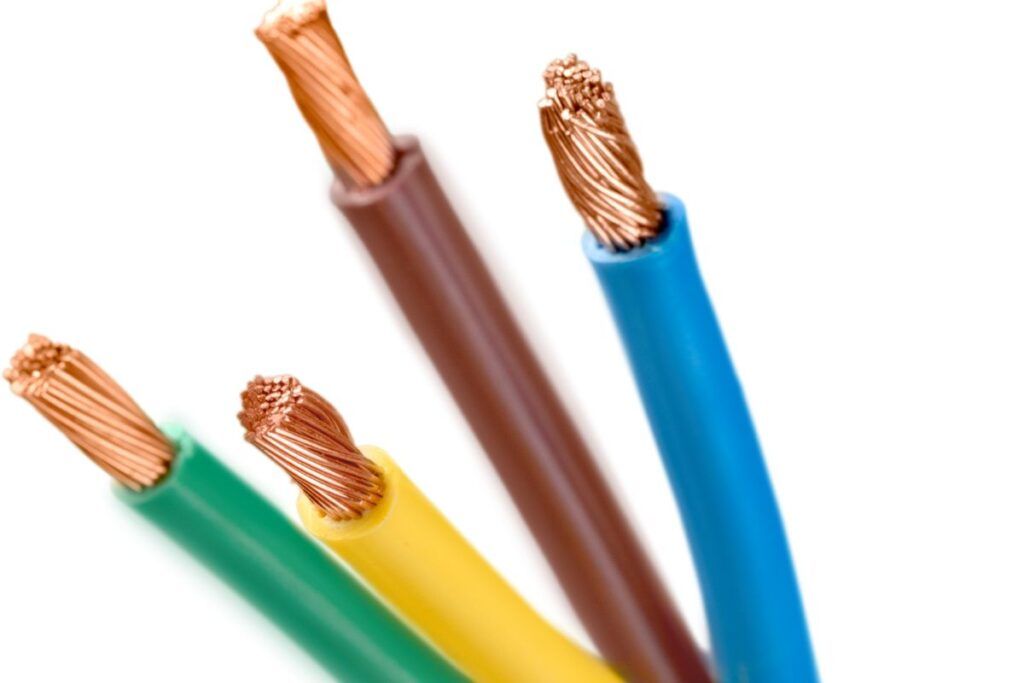
Of so many wire types, copper is the best type of wire for electrical work.
It has high conductivity and good resistance to heat and corrosion.
The wire is also flexible and malleable, thus being ideal for working in any situation without any contractions.
But since it has such good advantages, it is very expensive and complex to install.
Here are some good points about copper:
High conductivity
Copper is naturally high in conductivity after silver.
For this reason, you can use copper for longer distances.
Since copper wires can hold more current loads, you will need the wire in a smaller gauge than aluminum.
You will require only half the aluminum wire size for the same circuit breaker.
Heat resistant
Since copper wires can carry huge loads of current, they are extremely resistant to heat compared to aluminum wires.
Coppers do not contract or expand like aluminum wire.
Despite being flexible and malleable, they remain tight and straight.
Corrosion resistant
Copper wires have Patina, a greenish tarnish color formed by oxidation and changes the color of the copper wires.
That is why copper wires are resistant to corrosion.
However, the oxidation and the color change don’t affect the conductivity of the copper wires.
Malleable
The copper wires are highly conductive, and the wires are very thin.
That is why the wires can be molded and used without any risk of breakage.
Distance
Because of their high conductivity and heat resistance, you can use copper wires over long distances with smaller gauges.
If you use copper wire for 200 amp service, it should be 2 AWG.
Can we use aluminum wires?
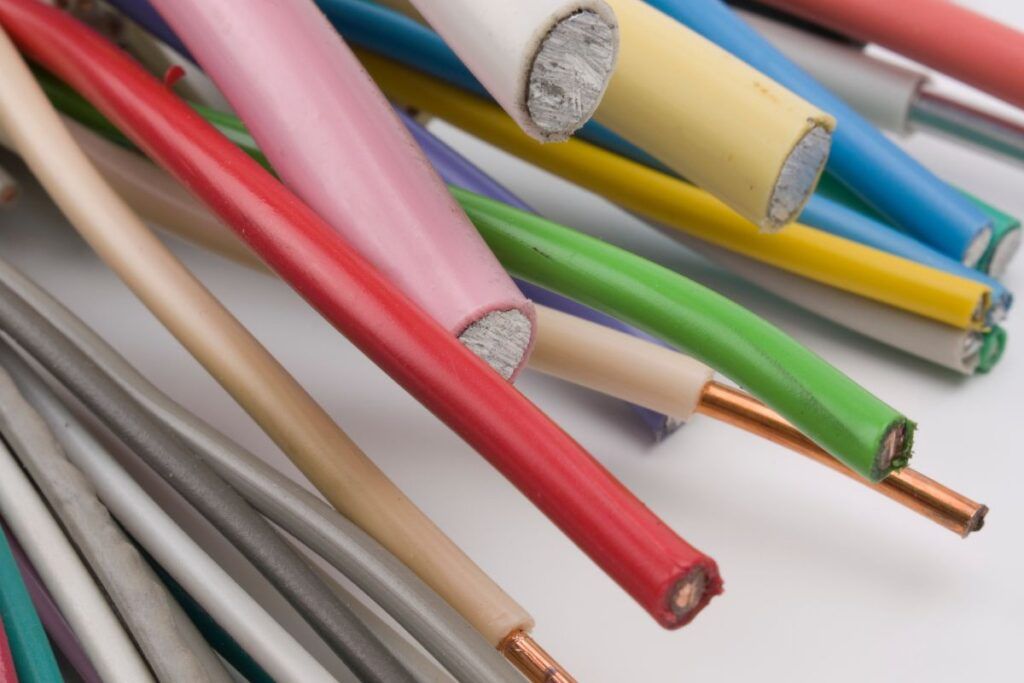
Aluminum wires are also a good option, but they are inferior to copper wires.
Aluminum has less conductivity than copper wires, so it responds quickly to heat and corrosion.
To cope with the low conductivity, you might require higher gauges, nearly double the size of the copper wires.
However, despite these drawbacks, people still use aluminum wires because of some good points.
Copper is always the best option, but it is heavy, costly, and tricky to fix.
Here are some reasons why people choose aluminum:
Easy to install
Aluminum is lightweight and, thus, faster to fix and easy to handle.
Since it has low conductivity, you will require higher gauges to balance the conductivity.
Even if the wires are at higher gauges, the wires are still lightweight and easy to install.
That is why a lot of people still use aluminum.
Cheaper
Aluminum is very affordable and cheap compared to copper wires.
If you cannot afford copper wires for their high cost, you can opt for aluminum wires.
But remember that you will require a higher gauge than the copper wires to compensate for the low conductivity.
So, if you are going for aluminum wires for 200 amp service, it should be around 4 AWG.
What about copper-clad aluminum?
Copper-clad aluminum is your third option for wiring the 200 amp service.
This wire can give you a little advantage over both the above wires.
Copper-clad aluminum has special copper fittings at the end.
However, it might not be able to give the benefits aluminum, and copper can give individually.
Let’s look at the good points of this wire:
Cheaper
The wire is cheaper than pure copper but more expensive than aluminum.
Aluminum is the cheapest wire out of the three wires.
If you want a better version of aluminum, go for copper-clad aluminum.
Corrosion resistant
The copper-clad aluminum is less corrosion-resistant than pure copper but more than aluminum.
Since aluminum is not corrosion-resistant, it will require some coating to prevent corrosion while connecting with the power terminal.
But, this wire will not need protection. Copper-clad will protect aluminum from corrosion.
Better conductivity
The wire is not as conductive as pure copper.
But, it is better than aluminum wires.
The wire is somewhat in the middle of the two wires in terms of conductivity.
So, if you opt for copper-clad aluminum, you will require the same as aluminum, i.e., 4 AWG, for a 200 amp service.
What other factors can determine the wire size for a 200 amp service?
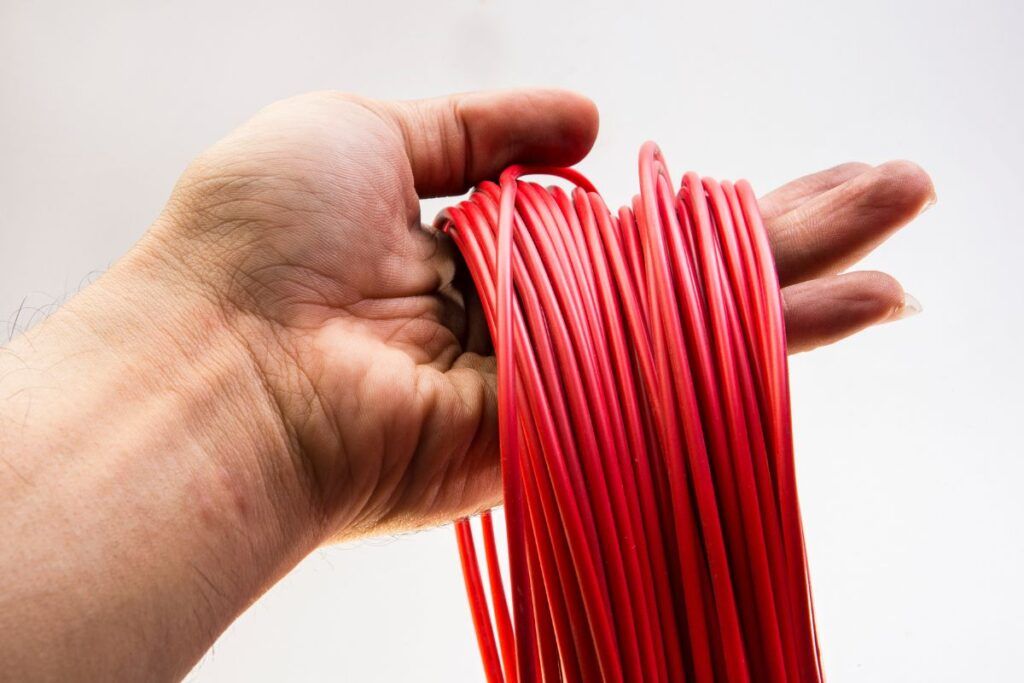
Besides the type of wire, some other factors are also responsible for selecting the wire size for 200 amp service.
Though the size will change, you should still consider those aspects before choosing the right wire.
Voltage drop
Voltage drop is the power loss while the electricity moves through the wires to your devices and appliances.
The maximum voltage drop recommended is 3%, not less than that.
The voltage at the circuit breaker should be around 120 volts.
The voltage drop should not be less than 117 volts in a circuit breaker with such volts.
If the circuit breaker is 240 volts, the voltage drop should be around 233 volts.
You can increase the wire gauge size to improve the drops.
The distance
The length of the wires can differ depending on the distance you want to use them.
When calculating the wire size, you must know from your electrical meter base to the electrical panel for running the service entrance.
Here is a table of the maximum distances and wire sizes:
| Distance (in feet) | Wire size |
|---|---|
| 50 ft | #2/0 copper, 4 AWG aluminum or copper-clad |
| 100 ft | #3/0 copper, 300 kcmil aluminum or copper-clad |
| 150 ft | #4/0 copper wire |
Local building codes
Consult the National Electric Code (NEC) and find out the electrical code of your living area.
The wire size can increase or decrease depending on your living region codes.
You also need to know and have permission for these electrical works.
What is the conduit size for the 200 amp service?
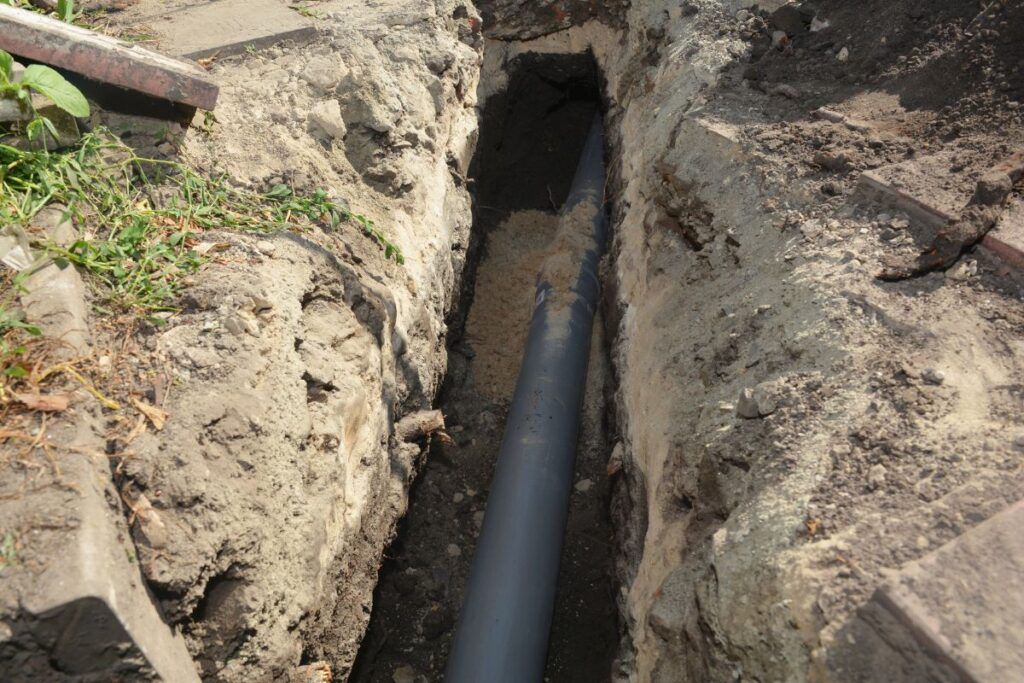
Electrical panels have knockouts to connect the electrical feeder conduits.
The minimum conduit size for 200 amp should be 1.5 inches.
You can also use 2 or 2.5 inches of conduit based on the space you will occupy inside it.
If you use 3 wires or more, you will use a space of 40%.
So, a 2-inch conduit will be enough. You can upgrade it to 2.5 inches for easy working.
Make sure that the amount of space occupied in the conduit has to be less than 40% if you use 3 or more wires.
What is the sub-panel wire size of the 200 amp service?
Since the electrical codes of different regions are different, the wire size will vary.
250 kcmil cables can handle 255 ampacities, and the 200 amp services can handle it.
So, a 250 kcmil wire is ideal for 200 amp.
The size depends on how far you run the wires from the sub-panels to the main panels.
The wire has to be at least 2 AWG thick.
However, it also depends on the cable length.
If you run a wire 200 feet away from the main electrical panel, use a minimum of 1-gauge copper wire.
You must use a thicker gauge if the distance is more than 50 feet.
What is the size of the ground wire for a 200 amp service?

The hot and neutral wires should be the same size, but the ground doesn’t have to be the same.
The ground wire should be around 4 AWG copper, 2 AWG aluminum, or copper-clad aluminum.
This size is recommended in article 250 of the 2020 NEC.
Here also, the sizes can increase or decrease depending on the wire distance, the faulty currents, wire types, etc.
Below is a guide of grounding electrode conductor size according to different amperes in main panels.
| Main panel size | Copper wire size | Aluminum or copper-clad size |
|---|---|---|
| 125 amps | #8 AWG | #6 AWG |
| 150 amps | #6 AWG | #4 AWG |
| 200 amps | # 4 AWG | #2 AWG |
A chart on different wire sizes for 200 amp
This chart will help you know the wire sizes depending on the voltages and single and 3-phase.
Single phase
120V Wire Size
| Distance | Wire size (copper) | Wire size (aluminum) |
|---|---|---|
| 50 ft | 3/0 AWG | 250 MCM |
| 75 ft | 3/0 AWG | 250 MCM |
| 100 ft | 3/0 AWG | 250 MCM |
| 200 ft | 250 MCM | 400 MCM |
| 250 ft | 350 MCM | 500 MCM |
| 300 ft | 400 MCM | 600 MCM |
240V Wire Size
| Distance | Wire size (copper) | Wire size (aluminum) |
|---|---|---|
| 50 ft | 3/0 AWG | 250 MCM |
| 75 ft | 3/0 AWG | 250 MCM |
| 100 ft | 3/0 AWG | 250 MCM |
| 200 ft | 3/0 AWG | 250 MCM |
| 250 ft | 3/0 AWG | 250 MCM |
| 300 ft | 4/0 AWG | 300 MCM |
480V Wire Size
| Distance | Wire size (copper) | Wire size (aluminum) |
|---|---|---|
| 50 ft | 3/0 AWG | 250 MCM |
| 75 ft | 3/0 AWG | 250 MCM |
| 100 ft | 3/0 AWG | 250 MCM |
| 200 ft | 3/0 AWG | 250 MCM |
| 250 ft | 3/0 AWG | 250 MCM |
| 300 ft | 3/0 AWG | 250 MCM |
3-phase
120V Wire Size
| Distance | Wire size (copper) | Wire size (aluminum) |
|---|---|---|
| 50 ft | 3/0 AWG | 250 MCM |
| 75 ft | 3/0 AWG | 250 MCM |
| 100 ft | 3/0 AWG | 250 MCM |
| 200 ft | 250 MCM | 350 MCM |
| 250 ft | 300 MCM | 500 MCM |
| 300 ft | 350 MCM | 600 MCM |
240V Wire Size
| Distance | Wire size (copper) | Wire size (aluminum) |
|---|---|---|
| 50 ft | 3/0 AWG | 250 MCM |
| 75 ft | 3/0 AWG | 250 MCM |
| 100 ft | 3/0 AWG | 250 MCM |
| 200 ft | 3/0 AWG | 250 MCM |
| 250 ft | 3/0 AWG | 250 MCM |
| 300 ft | 3/0 AWG | 250 MCM |
480V Wire Size
| Distance | Wire size (copper) | Wire size (aluminum) |
|---|---|---|
| 50 ft | 3/0 AWG | 250 MCM |
| 75 ft | 3/0 AWG | 250 MCM |
| 100 ft | 3/0 AWG | 250 MCM |
| 200 ft | 3/0 AWG | 250 MCM |
| 250 ft | 3/0 AWG | 250 MCM |
| 300 ft | 3/0 AWG | 300 MCM |
Note: While calculating the wire size at different voltages, copper sizes, and phases, I have considered a 3% of voltage drop.
A guide to different service or feeding rates and their wire size
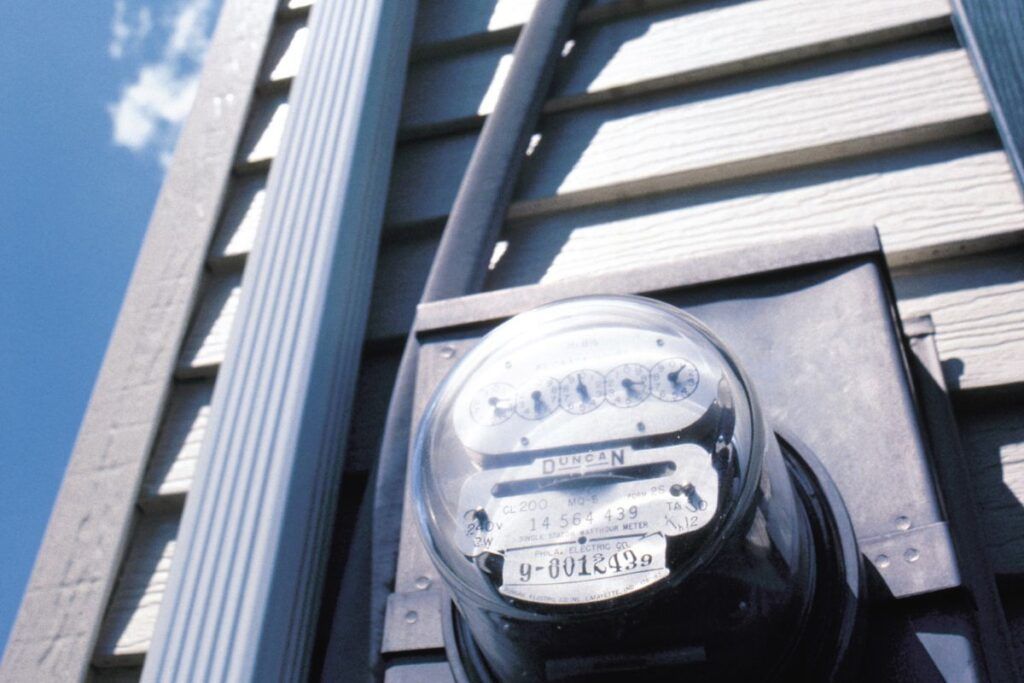
There are different amperes of electrical services, and the wire sizes differ accordingly.
Here is a list of different services and wire sizes in case you want to install other services:
| Services in amperes | Wire size (copper) | Wire size (aluminum or copper-clad) | Minimum conduit size |
|---|---|---|---|
| 100 amps | #4 AWG | #2 AWG | 1.25 inch |
| 110 amps | #3 AWG | #1 AWG | 1.25 inch |
| 125 amps | #2 AWG | #1 AWG | 1.25 inch |
| 150 amps | #1 AWG | #2 AWG | 1.25 inch |
| 175 amps | #1/0 AWG | #3/0 AWG | 1.5 inch |
| 225 amps | #3/0 AWG | 250 kcmil | 1.5 inch |
| 250 amps | #4 AWG | 300 kcmil | 2 inch |
| 300 amps | 250 kcmil | 350 kcmil | 2.5 inch |
| 350 amps | 350 kcmil | 500 kcmil | 3 inch |
| 400 amps | 400 kcmil | 600 kcmil | 3 inch |
Final thoughts
The best wire size would be the one that can hold 250 ampacities. According to that, 250 kcmil is the right wire size.
But depending on the wire type, the best copper wire size is 2/0 AWG, and aluminum or copper-clad aluminum wire size is 4/0 AWG.
Since copper has more conductivity and resistance to heat and corrosion, you can work it with smaller gauges. But aluminum is cheaper, lighter, and can be installed faster.
The aluminum or copper-clad gauge size must be higher to cope with these drawbacks. However, you may get some copper benefits from copper-clad aluminum.
The conduit sizes should be 2 or 2.5 inches. The space occupied inside the conduit with wires should not be more than 40%.
Also read:
- What Size Wire Do I Need For 125 AMP Service?
- What Size Wire Do I Use For 150 AMP Service?
- Wire Size For 100 AMP Service: Complete Table And Chart
FAQs
How much will it cost to install a 200 amp service?
Since most of us use several electrical appliances, you should upgrade the electrical service to 100-150 amp or 200 amp.
200 amp is the standard. So, to install a 200 amp service panel, the cost will be around $750 to $2,000 with a median of $1375.
A 200 amp meter base will cost $150-400 with a median of $275.
A 200 amp service wire will cost around $1000-5,000 with a median of $3,000.
Can I run a 200 amp sub panel off a 200 amp main?
Though you can do this, running a 200 amp sub panel into a 400 amp electrical service is better.
How many wires are needed for a 200 amp service?
Three wires run from the meter box to the main box, two hot wires, and a neutral wire.
The neutral and ground can stay connected inside the main panel.
The feeder from the main panel to the sub-panel consists of 4 wires, two hot wires, one neutral, and one ground.
The ground and neutral wire are not bonded inside the subpanels.
Data Source: National Electrical Code, NEC Wire Table, Electrical wiring, Home wiring.

